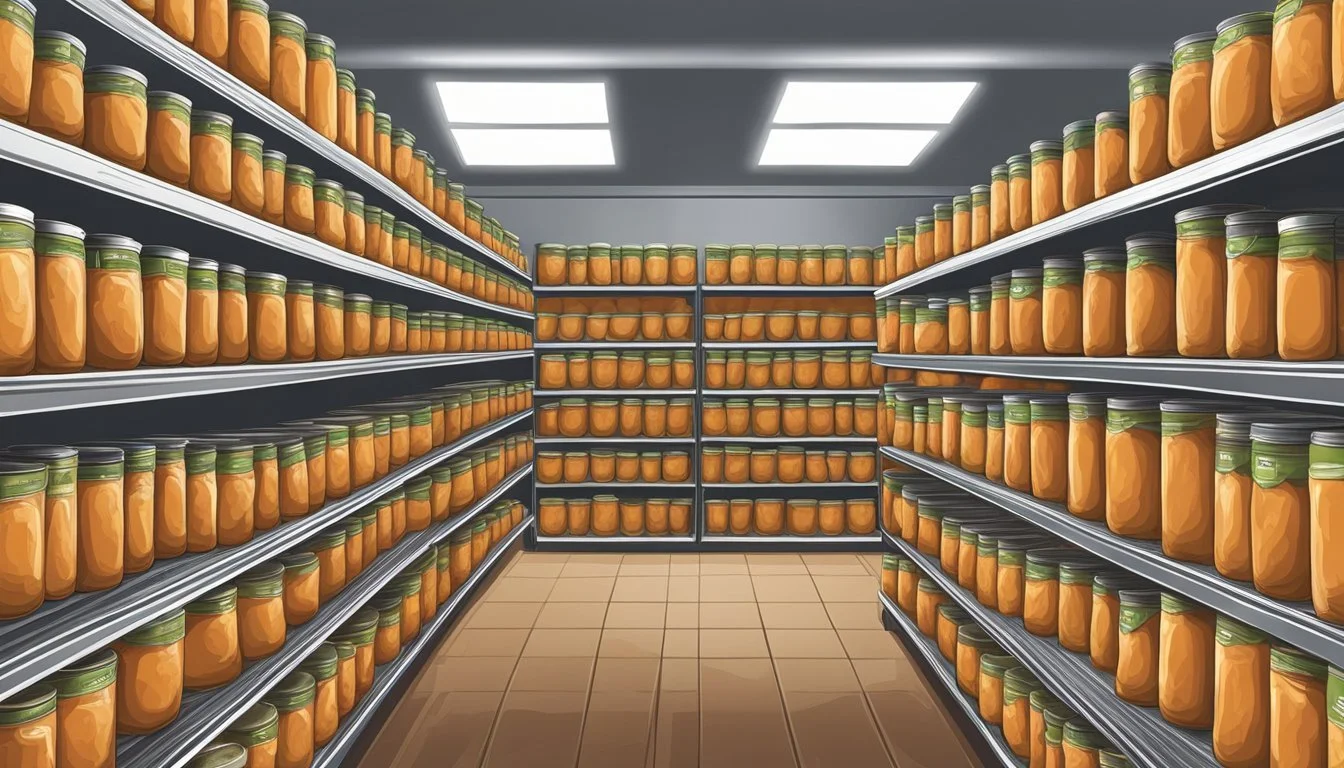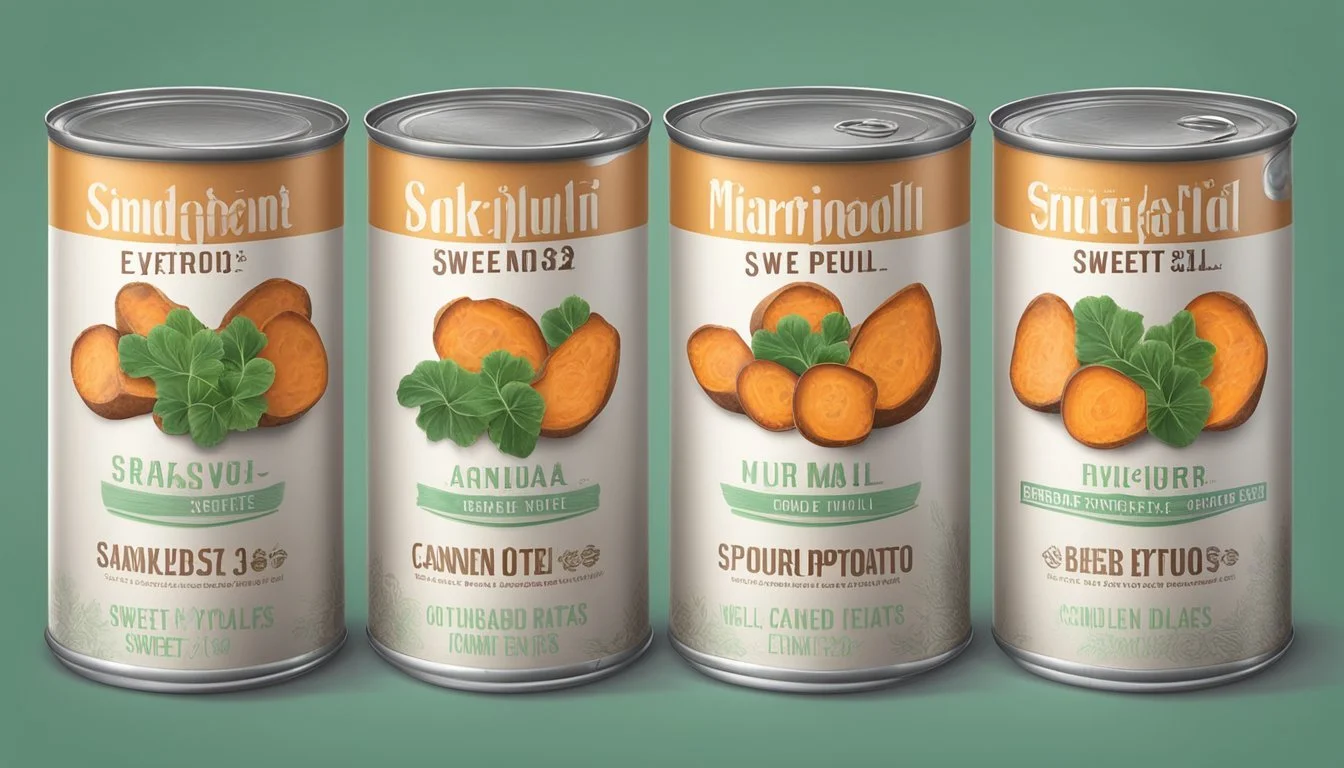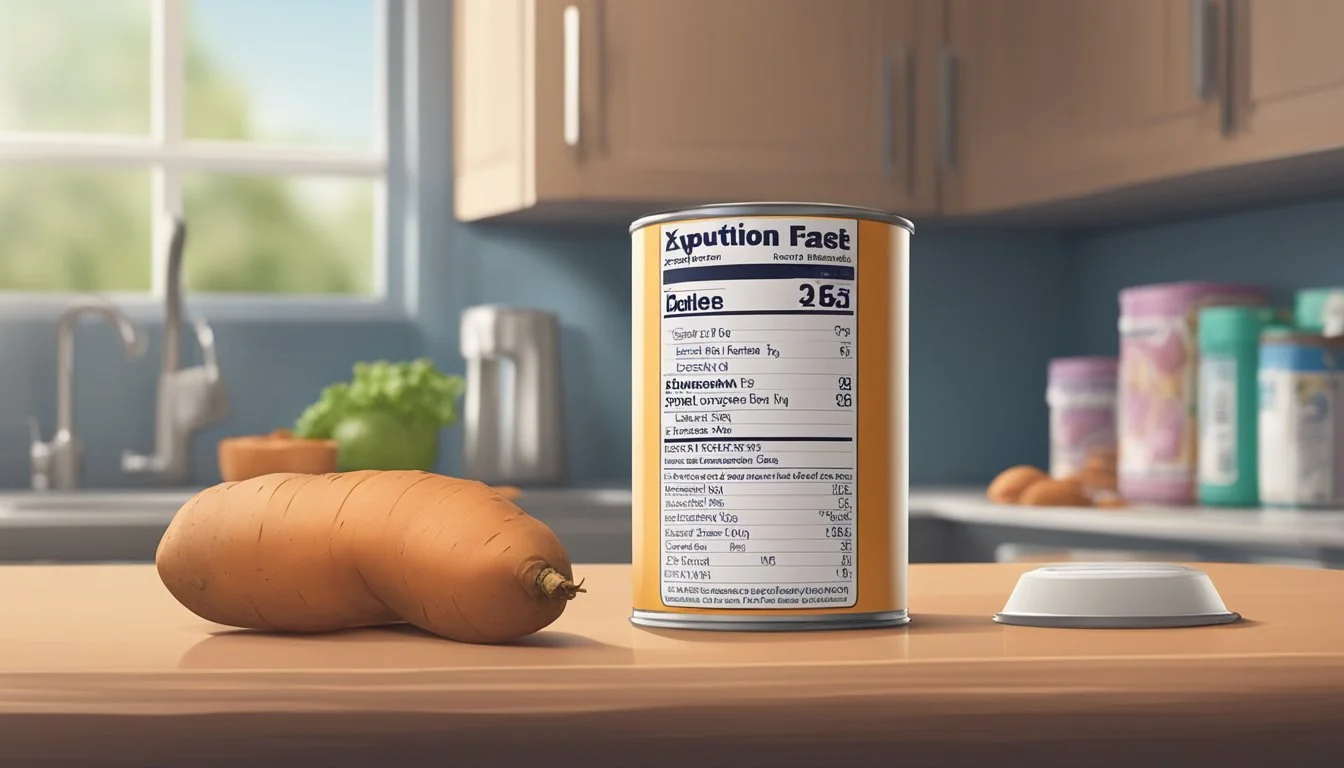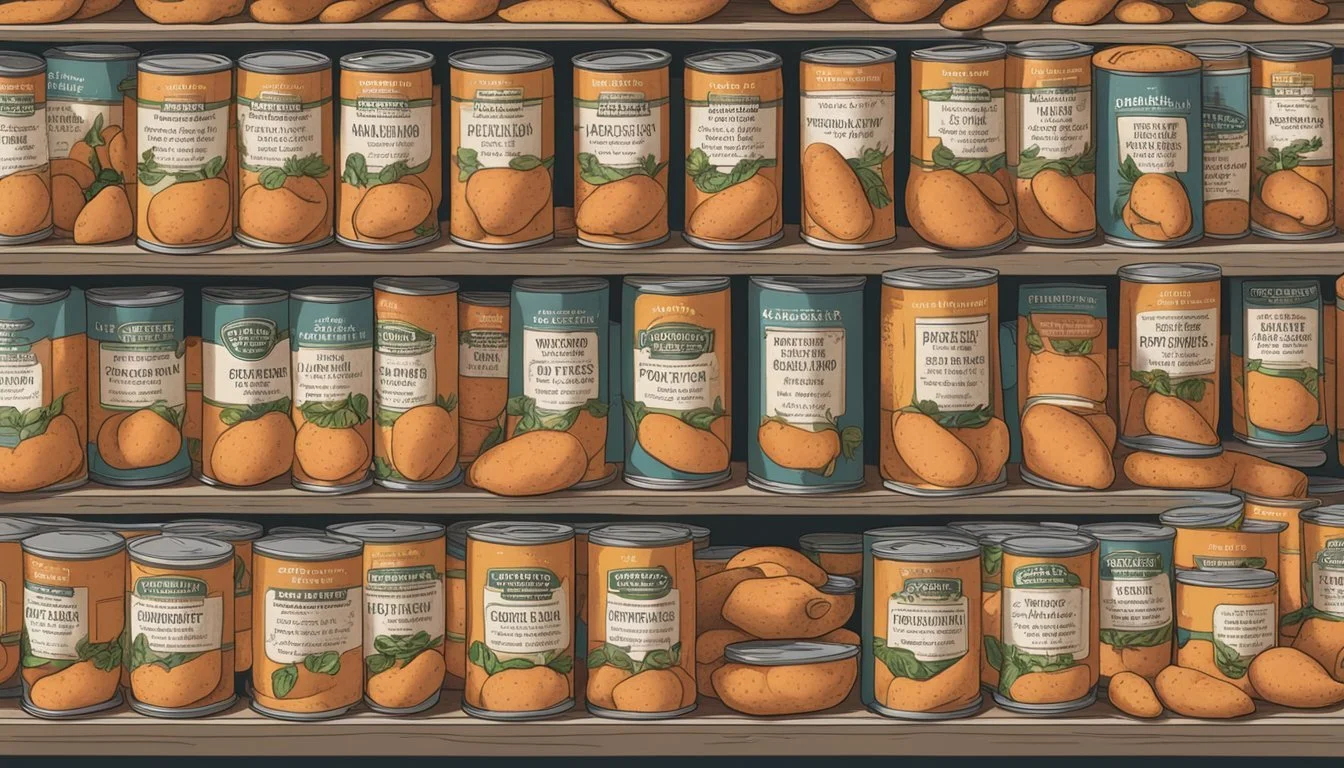Do Canned Sweet Potatoes Expire?
Shelf Life and Storage Tips
Canned sweet potatoes are a convenient pantry staple for many households. They offer an extended shelf life compared to their fresh counterparts, which makes them a reliable option for long-term storage. When stored properly in a cool, dry area, an unopened can of sweet potatoes can remain at peak quality for about 3 to 5 years.
Once opened, the shelf life of canned sweet potatoes significantly decreases. They should be consumed within 3 to 5 days when stored in the refrigerator to ensure freshness and safety. Proper storage conditions play a crucial role in maintaining the quality of both opened and unopened cans.
Inspecting the can for damage is essential before consumption. Signs of spoilage include a bloated can, discoloration, or an off smell from the sweet potatoes. Maintaining optimal storage conditions and regularly checking for these signs can help ensure that the canned sweet potatoes remain safe and enjoyable to eat.
Understanding Canned Sweet Potatoes
Canned sweet potatoes offer a convenient and long-lasting alternative to fresh sweet potatoes. This section explores their definition and types, nutritional value, and the packaging and processing methods that affect their shelf life and quality.
Definition and Types
Canned sweet potatoes are prepared by processing fresh sweet potatoes and then sealing them in an airtight container. These vegetables are often packed in their juices, and sometimes with added sugars or syrups.
Types of canned sweet potatoes include:
Plain canned sweet potatoes: No additional flavors or sweeteners.
Sweetened canned sweet potatoes: With added sugars or syrups.
Spiced canned sweet potatoes: Contain spices like cinnamon or nutmeg.
Nutritional Value
Canned sweet potatoes retain much of the nutritional value found in fresh ones. They are rich in fiber, vitamins (especially Vitamin A and Vitamin C), minerals (like potassium and manganese), and antioxidants. These nutrients support healthy blood sugar levels, improve digestion, and provide essential nutrients for overall health.
However, canned sweet potatoes with added sugars can have increased sugar content, which might not be desirable for those monitoring their sugar intake. It's best to read labels and choose options with no added sugars when possible.
Packaging and Processing
The packaging and processing of canned sweet potatoes significantly affect their shelf life and quality. They are typically processed by peeling, cutting, and cooking before being sealed in an airtight container. This method helps preserve their flavors and nutrients while extending their shelf life.
Stored in a cool, dry place, unopened cans can last between 3 to 5 years. Once opened, they need to be refrigerated and consumed within 3-5 days to maintain their quality, as recommended by various sources. Always inspect cans for any signs of damage, such as dents or bulging, which could indicate spoilage.
Proper Storage Conditions
Ensuring canned sweet potatoes are stored appropriately can significantly extend their shelf life and maintain their quality. The best storage methods depend on whether the cans are unopened, opened, or if the sweet potatoes are cooked.
Pantry and Cupboard Storage
Unopened cans of sweet potatoes should be kept in a cool, dry, and dark place. The pantry or a cupboard is ideal. Temperature is key; the storage area should be stable and not exceed room temperature, ideally staying below 75°F (24°C).
Air circulation is important, so avoid crowded spaces that limit air flow. This storage method can keep sweet potatoes fresh for 3 to 5 years. Regular checks for dents, rust, or punctures are recommended, as compromised cans can shorten shelf life.
Refrigerator Use
Once opened, canned sweet potatoes must be transferred to airtight containers and stored in the refrigerator. It is crucial to use clean containers to prevent contamination.
Under proper refrigeration, the sweet potatoes will last for 3 to 5 days. Cooked sweet potatoes can also be stored using similar methods, ensuring they are placed in shallow containers for even cooling. Monitoring the refrigerator temperature to keep it below 40°F (4°C) helps maintain their freshness.
Freezing Considerations
For long-term storage, freezing is highly effective. Transfer the sweet potatoes to freezer-safe containers or heavy-duty freezer bags, removing as much air as possible to prevent freezer burn.
Frozen sweet potatoes can last up to 6 months or longer, allowing for convenient use over extended periods. Label containers with dates to keep track of storage time. While freezing is effective, note that texture and flavor may change slightly once thawed.
Ensuring appropriate storage conditions for canned sweet potatoes can help retain their quality and extend their shelf life, offering convenient and versatile use.
Shelf Life and Expiration
Canned sweet potatoes have a long shelf life, but storage conditions and whether the can is opened or unopened can significantly impact this duration. Proper storage is essential to maximize their longevity and maintain quality.
Expected Shelf Life
Unopened cans of sweet potatoes typically have a shelf life of 2 to 5 years when stored in a cool, dry area. The actual duration can vary depending on storage conditions and the can’s manufacture date. Reviewing the expiration date printed on the can provides guidance on how long the contents will remain at peak quality.
Once the expiration date has passed, the quality may decline, but the contents might still be safe to consume. Properly stored, unopened cans retain their integrity and nutritional value over time. Cool, dry conditions are critical to preventing spoilage and ensuring that the product lasts as long as possible.
Post-Opening Longevity
After opening, canned sweet potatoes should be stored in the refrigerator. Transferred to an airtight container, they will last for 3 to 5 days. During this time, the quality and taste start to deteriorate, so it's recommended to use the contents as soon as possible.
Leftovers can be used in various recipes, so plan for future use to avoid waste. If stored improperly or kept longer, the risk of spoilage increases. Check for any unusual smells or signs before consuming leftover canned sweet potatoes. Proper refrigeration ensures they remain safe and enjoyable to eat.
Signs of Spoilage
Identifying spoilage in canned sweet potatoes involves observing visual clues, checking texture, and noting any changes in odor. Recognizing these signs ensures you avoid consuming spoiled food.
Visual Indicators
A good sweet potato should have vibrant, consistent color. Discoloration is a primary indicator that canned sweet potatoes have gone bad. Look for any changes to brown or black on the surface. If mold is present, particularly if it is black, yellow, or green, this is a sure sign of spoilage. Sprouting within the can also suggests the sweet potatoes are no longer safe to eat. Keep an eye out for bubbles in the liquid, which can indicate fermentation and spoilage.
Texture and Consistency
The texture of spoiled sweet potatoes will differ from fresh ones. Canned sweet potatoes should be firm but not hard. If they become soft, mushy, or slimy, it indicates they have gone bad. Check the consistency by gently pressing with a fork. Indentations that don’t spring back are also problematic. Changes in the integrity of the sweet potato can signal breakdown due to microbial activity.
Odor Development
Spoiled sweet potatoes will emit a noticeable foul smell. The scent may be sour, rancid, or just off from the usual sweet aroma. If odor is accompanied by any other signs like discoloration or softness, it clearly indicates the product is no longer safe to consume. When opening the can, if an unusual smell hits immediately, it's a sign the sweet potatoes have spoiled and should be discarded immediately to avoid food poisoning.
Safe Consumption and Health Risks
Canned sweet potatoes offer convenience but require proper handling to ensure safety and maintain nutritional value.
Assessing Edibility
To determine if canned sweet potatoes are safe to eat, check for any signs of damage or spoilage on the can. Look for rust, dents, or bulging, which indicate potential contamination. When opened, ensure there are no unusual odors, colors, or mold.
Expiry and Storage: Unopened canned sweet potatoes can stay good for 3 to 5 years if stored in a cool, dry place. Once opened, they should be stored in the refrigerator and consumed within 3 to 5 days to prevent bacterial growth.
Nutrition Preservation
Canned sweet potatoes can retain many nutrients, including vitamin A and dietary fiber, although there may be some loss compared to fresh. Canned vs. Fresh: Some varieties may include added sugars, which can increase calorie content. Opt for varieties without added sugars to maintain health benefits.
Storing Properly: Proper storage conditions help preserve nutrients. Keep the cans in a stable environment, avoiding extreme temperatures. After opening, transfer leftovers into airtight containers to maintain freshness and nutritional value.
Maximizing Sweet Potato Longevity
Proper storage and creative usage are essential to keeping canned sweet potatoes fresh and reducing food waste. These techniques ensure that sweet potatoes remain a delicious and nutritious part of your pantry.
Effective Storage Techniques
To maximize the shelf life of canned sweet potatoes, it's crucial to store them correctly. Unopened cans should be kept in a cool, dry area with temperatures between 50 and 70 degrees Fahrenheit. This prevents extreme temperatures and moisture from causing spoilage.
Once opened, transfer the sweet potatoes to an airtight container and refrigerate. Properly stored in the fridge, they can last 3-5 days. Avoid leaving them at room temperature to maintain quality.
Creative Utilization
Incorporating canned sweet potatoes into various recipes helps utilize them efficiently. Sweet potato casseroles and mashed sweet potatoes make hearty dishes that are easy to prepare. Use sweet potatoes in baking to add natural sweetness and moisture to muffins and bread.
For a quick meal, mix them into stews or soups. Experimenting with new recipes keeps meals interesting and ensures sweet potatoes are used up before they spoil.
Combating Food Waste
Minimizing food waste starts with planning and smart storage. Consider portion sizes when cooking to avoid leftovers. If leftovers occur, they should be stored in an airtight container for future use. Label containers with dates to keep track of when they need to be consumed.
Additionally, integrating sweet potatoes into meal planning can prevent over-purchasing. Use any remaining sweet potatoes in diverse dishes, thus stretching resources and reducing unnecessary waste.
Cooking and Preparation Tips
When it comes to cooking canned sweet potatoes, following these detailed steps can enhance their flavor and texture. Proper storage after cooking is equally important to maintain their quality.
Before Cooking
Storage: Once the can is opened, refrigerate the sweet potatoes to prolong their shelf life. They typically last 3-5 days in the refrigerator.
Preparation: Start by draining and rinsing the sweet potatoes thoroughly to remove any excess syrup or liquid. This step is crucial for achieving a balanced flavor and reducing excessive sweetness.
Cutting: Depending on the desired dish, sweet potatoes can be left whole, cut into cubes, or sliced into rounds. For even cooking, try to keep the pieces uniform in size.
During Cooking
Oven Roasting: Preheat the oven to 375°F (190°C). Place the sweet potatoes on a baking sheet lined with parchment paper or foil for easy cleanup. Drizzle with olive oil or melted butter, and optionally sprinkle with brown sugar and spices for added flavor. Roast until tender and golden brown.
Boiling: For a simpler approach, bring a pot of water to a boil. Add the sweet potatoes and cook until they are fork-tender. This method is quick and retains more moisture.
Flavor Enhancements: To enrich the taste, consider adding ingredients like cinnamon, nutmeg, or a touch of maple syrup while cooking. These can be mixed into the sweet potatoes before roasting or boiling.
After Cooking
Leftovers: Store any leftovers in an airtight container. Refrigerate promptly to maintain their quality and flavor. Proper storage can keep the cooked sweet potatoes fresh for up to 3 days.
Reheating: Reheat gently in the microwave or oven to avoid drying out. Adding a small amount of butter or oil can help retain moisture.
Usage: Leftover sweet potatoes can be repurposed in various dishes like casseroles, soups, and salads. Their versatile nature makes them a valuable addition to many recipes.
Paying attention to these steps ensures that the cooked sweet potatoes remain delicious and safe to eat.
Additional Considerations for Sweet Potatoes
When dealing with sweet potatoes, it's essential to pay attention to how you select, handle, store, and cook this versatile root vegetable. Proper handling enhances both their taste and nutritional value.
Selection and Purchase
When choosing sweet potatoes, look for ones that are firm and free from blemishes. Avoid those with sprouts or soft spots, as these indicate age and potential deterioration.
It's best to store raw sweet potatoes in a cool, dry place, such as a basket on the counter, away from direct sunlight. This helps maintain their quality and delay sprouting. Inspect the potatoes carefully to ensure they haven't been damaged during transport.
Handling Cut Sweet Potatoes
Cutting sweet potatoes exposes them to air, which can cause them to discolor and lose moisture. If not using immediately, store cut pieces in water to prevent this.
For longer storage, place cut sweet potatoes in an airtight container and refrigerate. Use within a few days to maintain their freshness. This method helps preserve both the taste and texture of the sweet potatoes.
Enhancing Flavor and Texture
Sweet potatoes can be enhanced with various ingredients to improve their flavor and texture. Butter, brown sugar, and spices are popular choices, especially for baking.
Adding ingredients like pecans can add a delightful crunch to sweet potato casseroles. Experimenting with different seasonings can also bring out the natural sweetness and improve the overall eating experience. Ensure the sweet potatoes are cooked to the right degree to achieve the desired texture.
Storage After Cooking
Cooked sweet potatoes should be stored promptly to maintain their quality. Place leftovers in an airtight container and refrigerate them.
Refrigerated cooked sweet potatoes can last for up to a week. Ensuring they are properly sealed will prevent them from drying out or absorbing other odors from the fridge. This practice keeps cooked sweet potatoes safe to eat and preserves their nutritional value.









